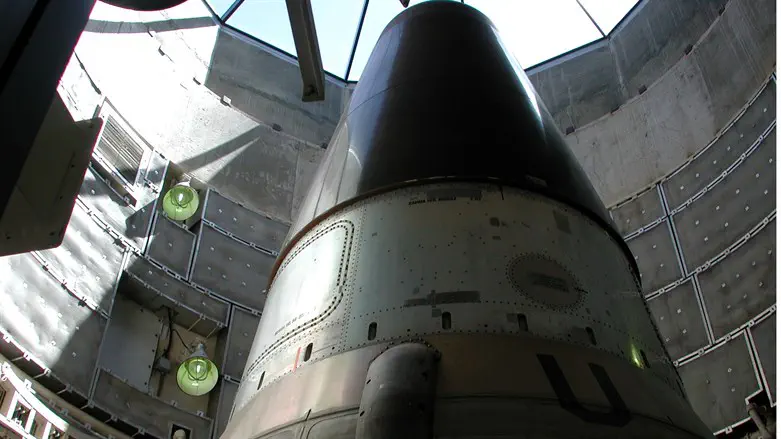
Fearing international backlash, Iran wants to limit the range of the missiles it plans to provide Russia for the war in Ukraine, four senior Israeli officials told Barak Ravid of Axios on Monday, citing intelligence reports.
Iranian ballistic missile deliveries to Russia could violate a UN Security Council resolution and trigger a "snapback" mechanism, which would reimpose UN sanctions on Iran.
Such a situation would be problematic for Iran, but even more so for Russia, which is a permanent member of the UN Security Council.
Under UN Security Council resolution 2231, which passed in 2015 as part of the nuclear deal between Iran and world powers, countries are not allowed to transfer or receive Iran ballistic missiles and drones that have a range of more than 300 kilometers and a payload of more than 500 kilograms until October 2023.
The four Israeli officials told Axios that international pressure has not fully deterred Tehran from planning to send the missiles to Russia and it intends to go ahead with the deliveries soon.
But, in an effort to mitigate the international fallout and not violate the Security Council resolution, Iran plans to give Russia only missiles with a range of less than 300 kilometers and modify other missiles so they stay within the parameters of the resolution, the Israeli officials said.
This includes a Fateh-110 missile system, which has a range of 300 kilometers, but the Iranians plan to modify it so that it doesn't violate the resolution, according to the Israeli officials.
The officials added that the Iranians originally considered also providing Russia with the Zolfaghar missile, which has a range of 700 kilometers, but they are no longer weighing whether to send this system.
The Iranian Ministry of Foreign Affairs and a spokesperson for Iran's UN representative did not respond to requests for comment.
Iran is already known to be providing drones to Russia for use in the war against Ukraine.
In July, US National Security Advisor Jake Sullivan said the US had intelligence indicating that Russia is looking to Iran for UAVs.
He indicated at the time that the Iranian government is preparing to provide Russia with several UAVs for use in Ukraine, and train Russian forces to use these UAVs.
A month later, it was reported that Iran had begun training Russians to use its drones, though it was also noted that Russia is experiencing “numerous failures” and technical glitches with the drones it purchased from Iran.
In September, Ukraine reported the first Russian attacks carried out using Iranian-made drones, targeting the south of the country, including the strategic city of Odessa on the Black Sea.
At the start of October, Iranian-made drones were also reportedly used in an attack in the Ukrainian town of Bila Tserkva, southwest of the capital Kyiv.
Iran’s Foreign Minister, Hossein Amir-Abdollahian, recently acknowledged for the first time that his country gave drones to Russia, saying that the deliveries happened before the war started. Iranian officials had previously denied sending any drones to Russia.
Ukrainian President Volodymyr Zelenskyy later said in an address to the Ukrainian people that he knows Iran’s claims are false.

